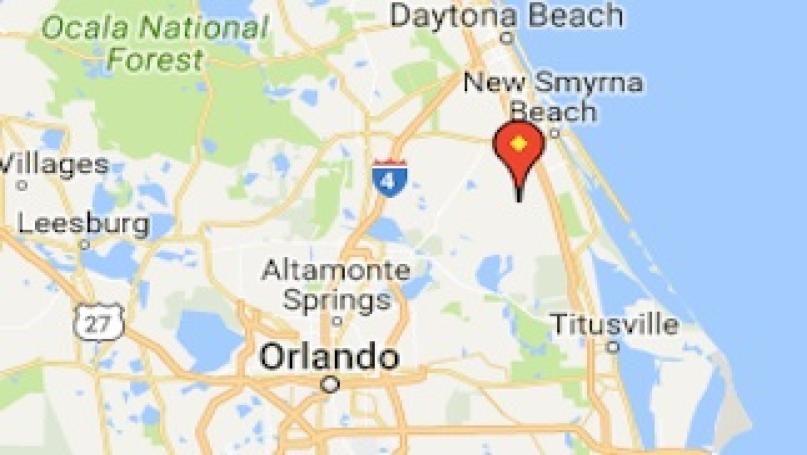
Headline Surfer graphic / Rattle Snake Island, shown on the map above is where excess silt and muck is being dumped from a beach renourishment project.
NEW SMYRNA BEACH, Fla. -- From a distance to swimmers, surfers and sunbathers, the mammoth wet dirt spewing from a large piece of machinery looks like an oil well run amok, but it's really wet sand being pumped from the Intracoastal Waterway several miles away through a piping network snaking along the edge of the sand dunes.
The $7.8 million beach and Intracoastal renourishment program is in its final stage with 760,000 cubic yards of sand relocated from the Intracoastal Waterway -- 300,000 of it going to the beach itself.
The rest is headed to Rattlesnake Island, directly opposite the Intracoastal and the inlet. In all, 1.6 million cubic yards of sand will have been relocated from the Intracoastal Waterway. The dredging mines 6,000 cubic yards per day -- 80 percent of it water and 20 percent soil, which translates to sand. The project's aim is to cleanse the Intracoastal Waterway of silt and sand build-up that is choking the water and making iyt difficult for boats to navigate and a struggle for aquatic and sea life, as well, said David Roach, executive director of the Florida Inland Navigation District, which is overseeing the massive project.
"There's a $17 billion a year economic outlook on this waterway," Roach said. "Mother Nature brings in the sand through the channel between Ponce Inlet and New Smyrna Beach.
There are 50,000 cubic yards dragged into the Intracoastal Waterway a year , which falls into the channel and creates inverted potholes. In the waterway, the sand goes upward and that means certain boats can't move through. We're advertising the channel as 12 feet, but in some areas, it's only three feet deep because of the shoaling."
With this dredging, begun in 2005, 15 miles of channel will be reopened. The project was to be completed by late September, but was shut down June 26 until the end of July because of the concern about underwater power lines being impacted, Roach said. Utility lines beneath the bridges were supposed to be several feet under where the dredging was occurring, but in some spots was closer or even above it, including some utility lines by AT&T, which were installed without proper permitting, Roach said. The precise location of delicate utility lines, including a gas line, were found and mapped out by divers and engineers, he said.
The project's new expected completion date is mid- to late-October, Roach said. The beach portion, now less than a mile south of the Flagler Avenue approach on the beach, is closed for the Florida Inland Navigation District beach renourishment project. It should be completed by month's end, Roach said.
Roach said the benefits of dredging the channel are positive for the beach, which has lost sand due to storms. Joe Nolin, Volusia County coastal division director, agreed: “The U.S. Army Corps of Engineers and the Florida Inland Navigation District are maintenance dredging the Atlantic Intracoastal Waterway in the New Smyrna Beach area, the dredged beach quality sand material is being deposited along the beach. The beach renourishment is an added benefit from the maintenance dredging project.”
The sand dredged from the Intracoastal Waterway is being pumped through pipes onto the beach. It is then graded into dune lines to encourage more natural protection. Beachgoers are advised to stay away from the 200-500 foot construction area and the pipeline. The construction area advances south along the beach by approximately 100 -200 feet a day as work progresses, according to Nolin. The U.S. Army Corps of Engineers and FIND project is maintenance dredging the middle and northern reaches of the Intracoastal Waterway channel in Volusia County in the vicinity of Ponce de Leon Inlet and New Smyrna Beach.
Approximately 269,000 cubic yards of beach quality dredged material will be placed on the beaches of New Smyrna from approximately Sapphire Road to approximately 21st Avenue. Although the renourishment work is not a county project, the county is assisting with public information as a service to beach visitors, residents and businesses, Nolin explained.
For further information on the dredging project, please contact the U.S. Army Corps of Engineers Corporate Communication Office at 904-232-1238 or 904-728-1182.
